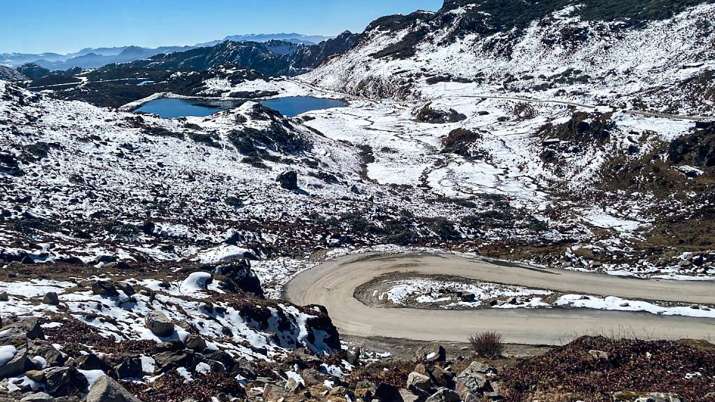
Road leading from Tawang town to Bumla Pass in Arunachal Pradesh.
Highlight
- Chinese government renamed 15 places of Arunachal Pradesh in its map
- This is the second time that China has changed the names of places in Arunachal Pradesh.
- China shares its 22,457 km land border with 14 countries including India
Two days before China implemented the new border law, the Chinese government has renamed 15 places in Arunachal Pradesh in its map.
China’s Ministry of Civil Affairs issued a statement saying that they have ‘standardised’ names for 15 places in Arunachal Pradesh, which will be used on Chinese maps.
“Arunachal Pradesh has always been, and always will be, an integral part of India. Assigning invented names to places in Arunachal Pradesh does not change this fact,” the MEA said on reports that China has named some places in Arunachal Pradesh in its own language. has kept.
This is the second time that China has changed the names of places in Arunachal Pradesh. Long ago in 2017, China changed the names of six places. The renaming of names comes just two days before the new border law comes into force.
On 23 October, the Standing Committee of the National People’s Congress, China’s top legislative body, passed a new law citing the “protection and exploitation of the country’s land border areas”. The committee had said that the new law will come into force from January 1.
The law is not specifically for the border with India. China shares its 22,457 km of land border with 14 countries including India, which is the third longest after borders with Mongolia and Russia.
The new border law has 62 articles and seven chapters. By law, the People’s Republic of China will set up boundary marks to clearly mark the border on all of its land borders. The type of marker is to be decided in agreement with the neighboring state concerned.
The law further states that the People’s Liberation Army (PLA) and the Chinese People’s Armed Police Force will maintain security along the border. This responsibility includes cooperating with local authorities in dealing with illegal border crossings.
The law prohibits either party from engaging in any activity in the border area that would “endanger national security or affect China’s friendly relations with neighboring countries”. It includes construction of any permanent building by any person without authorization from the authority concerned.
In addition it states that citizens and local organizations are mandated to cooperate with government agencies in protecting and protecting border infrastructure, maintaining the security and stability of borders, and maintaining border security.
This law paves the way for the development of the border area. It states that the People’s Republic of China “to strengthen the sense of community of China, promote the spirit of China, protect the unity and territorial integrity of the country, strengthen the citizens’ spirit of the country and the motherland by education and will promote security, and build a common spiritual home for the Chinese nation” among the citizens of the border region.
The state will “strengthen the border defence, support economic and social development as well as open up border areas, improve public services and infrastructure in such areas, encourage and support the lives of the people, and support border defence.” May take measures to promote co-ordination between and social, economic development in the border areas”. In fact, it suggests a push to settle civilians in the border areas.
read also , Mumbai on high alert after intelligence inputs of Khalistani attack on New Year’s Eve
This law has come in the midst of a border dispute with India. Experts said that Beijing can put its heel-toe in the current situation along the Line of Actual Control.
India claims that China is illegally occupying about 38,000 square kilometers of India’s territory in Aksai Chin, bordering eastern Ladakh. Pakistan ceded about 5,180 sq km of illegally occupied Indian territory to China in 1963.
India and China have been engaged in a border dispute for the last 20 months and diplomatic and military talks are on to resolve the issues.
Read also | After India’s purchase of Rafale, Pakistan bought 25 fighter jets from China
,